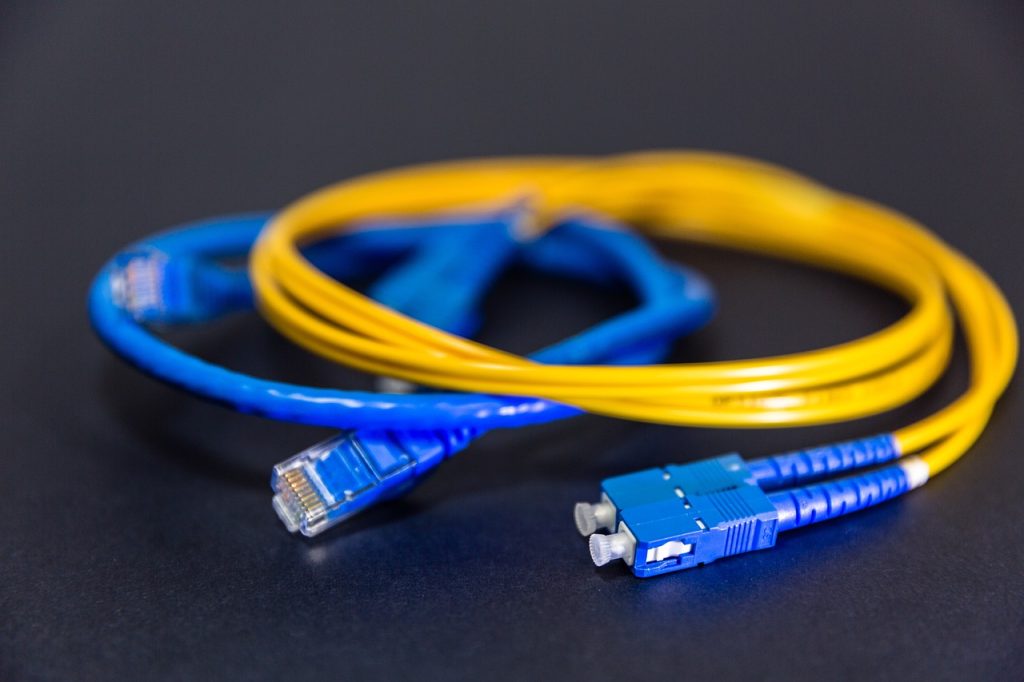
Fiber optic cables and Ethernet cables are both types of network cables, used for different applications and environments. They differ mainly in terms of their construction, data transmission mode, speed, and distance capabilities.
Construction and Data Transmission Mode:
- Fiber Optic Cables: Fiber optic cables use light pulses to transmit data. These cables consist of thin strands of glass or plastic fibers, enclosed within an insulated casing. Due to the use of light for data transmission, fiber optic cables are less susceptible to interference and can deliver higher speeds. They are typically used in situations where long-distance, high-speed data transmission is required.
- Ethernet Cables: Ethernet cables, also known as Cat5, Cat6, or Cat7 cables, use copper for data transmission. They send data through electrical signals. While they can deliver high speeds, they are more prone to electromagnetic interference and the speeds can drop over longer distances. Ethernet cables are commonly used for short to medium range applications, such as within a building or a campus.
Speed and Distance:
- Fiber Optic Cables: Fiber optic cables can deliver extremely high speeds, up to tens or even hundreds of Gbps (gigabits per second). Additionally, they can maintain these high speeds over long distances, up to several kilometers without the need for signal boosters.
- Ethernet Cables: Ethernet cables are capable of delivering high speeds as well, with Cat5e supporting up to 1Gbps and Cat6 and Cat7 cables supporting up to 10Gbps. However, these speeds can only be maintained over shorter distances. After about 100 meters, the signal quality and speed begin to decrease.
Conclusion:
Both fiber optic and Ethernet cables have their specific use cases. Fiber optic cables are more suitable for long-distance, high-speed applications, such as internet backbones, and are also a good choice for environments with high electromagnetic interference. Ethernet cables are a cost-effective choice for home and office networks, where the distances are smaller and high-speed connections are still achievable. The right cable depends on the specific needs of your application in terms of distance, speed, and budget.
